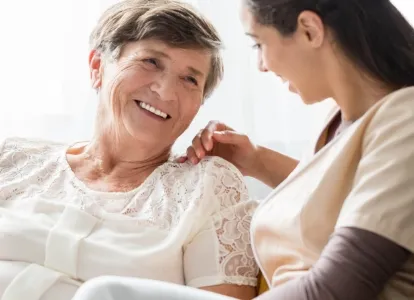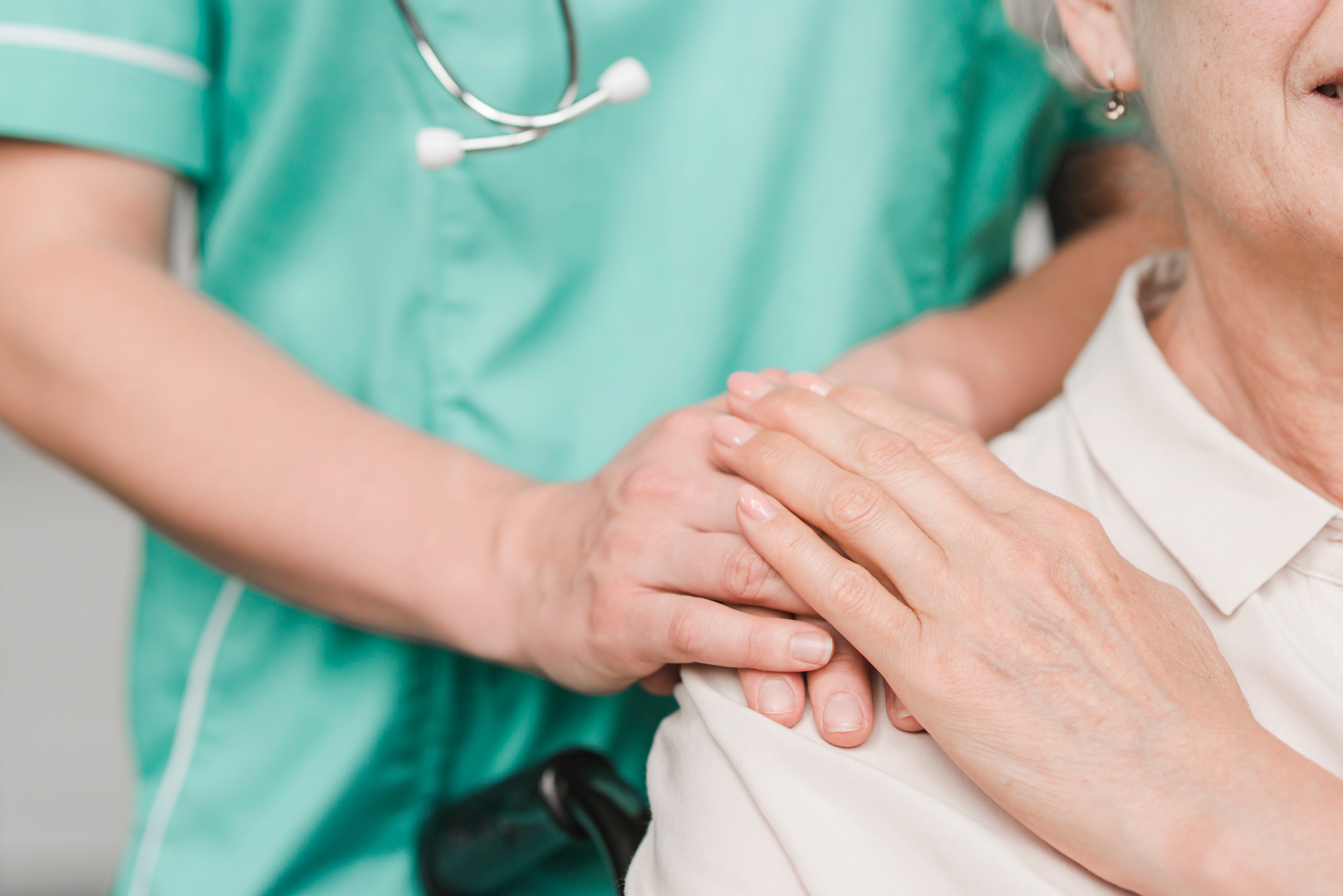9 Dressing Solutions to Help your Patients – Adaptable Clothing
Adaptive Clothing can make a huge impact in the quality of life of the family caregiver, the professional health care provider and those they care for. There is a vast need for dressing solutions from post operative to daily senior dressing challenges. Adaptive Clothing falls into two main categories: independent dressing and assisted dressing. There is also the footwear category, filled with adaptations to handle any foot problem.
Within Adaptable Clothing solutions, there are open back seated dressing designs which provide great dressing solutions. Open back designs are available in tops, bottoms, nightwear and dresses. The open back design for tops and nightwear consists of two snaps that rest on each shoulder. Open Back apparel are designed to open up completely, so the health care professional can simply slide the arms through the generous sleeves, pull the garment up, and snap it into place. Independent dressing is a mixture of replacing buttons, zippers and harsh elastic with comfortable stretch, easy touch fastenings and magnets.
Some case scenarios of how Adaptive Clothing & Footwear are great dressing solutions for specific disabilities are as followed:
Reduced Arthritic Dexterity:
Open side pants are designed to have two easy touch strips along both sides. These easy touch tabs allow it to open with ease and close just as easily. Side Opening Easy Touch Pants alleviate the struggle with buttons or zippers. Another solution to reduced dexterity is a Magnetic Top which replaces buttons completely with magnetic closures.
ALS:
In cases of ALS that are more severe, people will experience different levels of paralysis. Getting them dressed when they are paralyzed can prove difficult not just because of the struggle of dressing another person, but they can also become rigid and contracted. If this is the case, clothes for people with ALS and types of adaptive tops open up completely; allowing arms to be slid easily into the garment. This adaptable clothing item reduces the struggle of getting both arms into the sleeves as well as attempting to get the patients head into the neck opening.
Dementia/Alzheimer’s Disrobing:
Disrobing in dementia patients can be a symptom and a daily issue. An adaptable clothing item in the form of a special jump suit has been created specifically to combat these specific issues. The anti-strip jumpsuit zips up in the back, and the patient is unable to access the closures.
Parkinsons:
Since Parkinson’s disease is a progressive disease, different levels of dressing may be needed at different stages. This is why there are different types of adaptable clothing items to help with every stage. Elasticized pants allow the wearer to simply pull the pants up instead of fumbling with buttons and zippers. Because hand trembling is a common symptom, easy touch closures on either side of open side pant allow the wearer to undo the fastenings, making wide openings make them easy to slip into. Traditional tops feature wider openings.
Diabetic Neuropathy:
Diabetic neuropathy of the feet is when there is excessive nerve damage in the feet. When this happens, feet are more likely to be damaged from small things like blisters; tight shoes can cause pressure points and reduce circulation. The biggest fear is as this happens; the person won’t be able to feel what is happening. There is a wide range of shoes with minimal seams and deep wide toe boxes will ensure that the patient’s footwear isn’t creating any problems.
Edema Feet:
Edema often causes intense swelling in both the foot and the ankle. Adaptive Footwear offers wider openings, to allow the foot to slide into the shoe. Each wide opening serves a double purpose to allow for any swelling in the ankle. The adaptable shoes feature easy touch closures and allow for adjustment in the case that swelling increases throughout the day.
Bed Ridden Patients
Open back tops/nightgowns and dresses are made to open up completely, so that the bed ridden patient can stay in a reclined position while being dressed. Secure snaps on every top and nightgown/dress for bed ridden patients are placed strategically on the shoulder to ensure that there are no pressure points when the patient is in a reclined or seated position.
Wheelchair Patient
Wheelchair pants allow the patient to be dressed from a seated or lying down position. This is extremely helpful for numerous reasons when dressing a patient. Quick changes; whenever there is an accident or spill, pants can quickly be slipped off without ever having to leave the wheelchair. Less time that has to be spent in a lift, as well as less rolling while trying to dress a patient.
Sleeping Routine
Adaptable clothing items with an open back make it easier for patients to slip into them at night. When it’s time for bed, a senior might be extremely tired, and putting on pajama bottoms can be a chore and dangerous. Putting something over their head can also cause confusion. Open back nightgowns eliminate both issues. Simply slide the night gown on and snap on the shoulders. The snaps on either shoulder provide a generous overlap, to ensure that they will be completely covered if they have to get up at night to use the restroom. Socks with grip on the bottom can greatly help reduce the risk of slips and falls on nighttime trips to the washroom.
Adaptive clothing & footwear is designed to help both healthcare professionals and their patients wearing the clothing. Footwear solves two problems, pain and safety. Ensuring that every resident and patient has the proper footwear will keep them safe to help in fall prevention. Adjustable footwear will allow every person to find footwear that will agree with every foot problem that they may have. Adaptive Clothing allows for different levels of mobility and independence. Any struggles with dressing can be solved with different clothing adaptations. Whether it is switching out buttons with magnetic closures or easy touch fastenings instead of zippers, these are easy ways to allow your patient to remain independent while dressing more easily. If your patient is at the stage where mobility is so limited they need help getting dressed, the open back design of adaptive clothing allows the person to remain in a seated or lying down position to significantly help whilst dressing a patient.
Learn more about adaptive clothing & footwear and dressing solutions at www.silverts.com/videos.





Comments
Thanks for this.